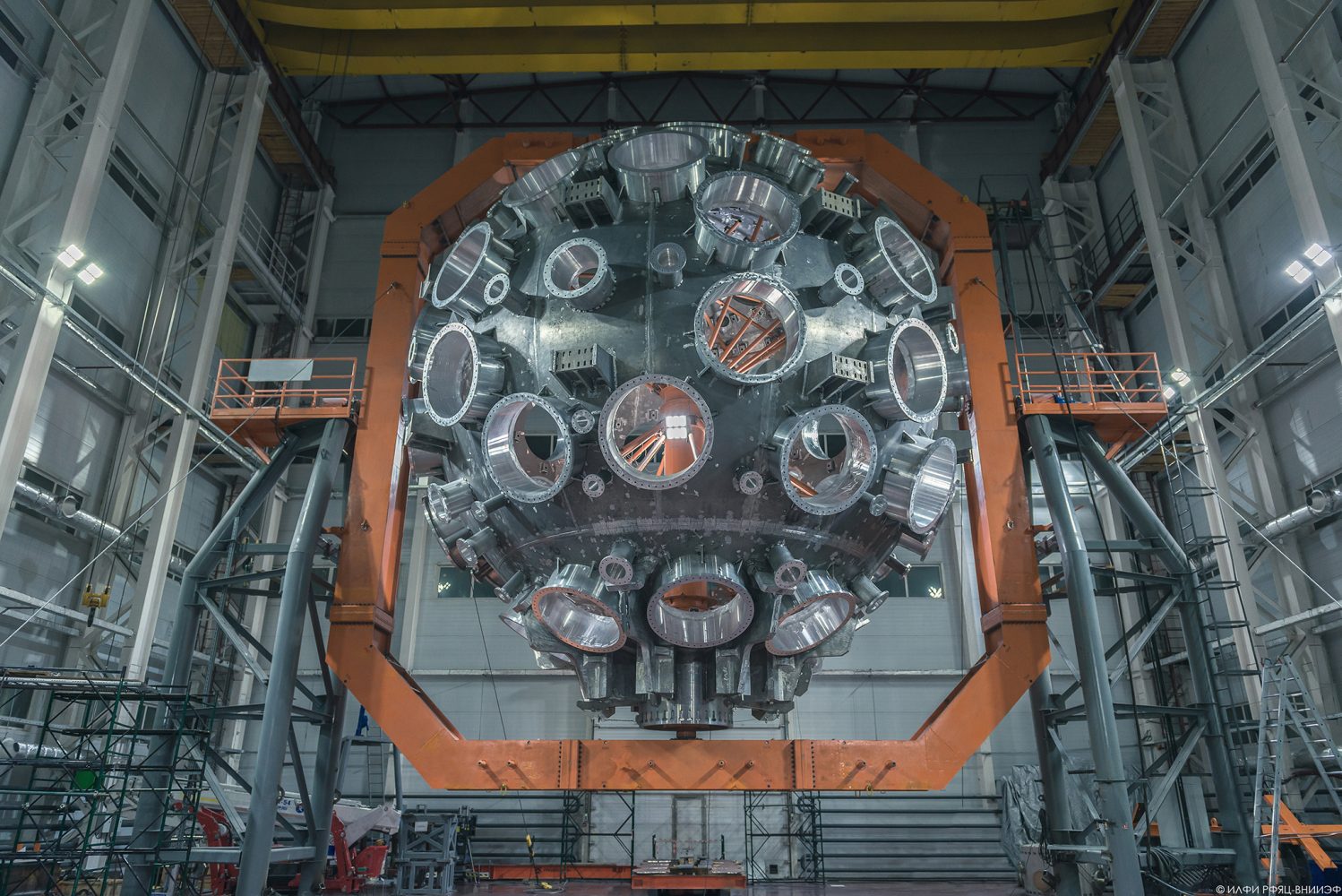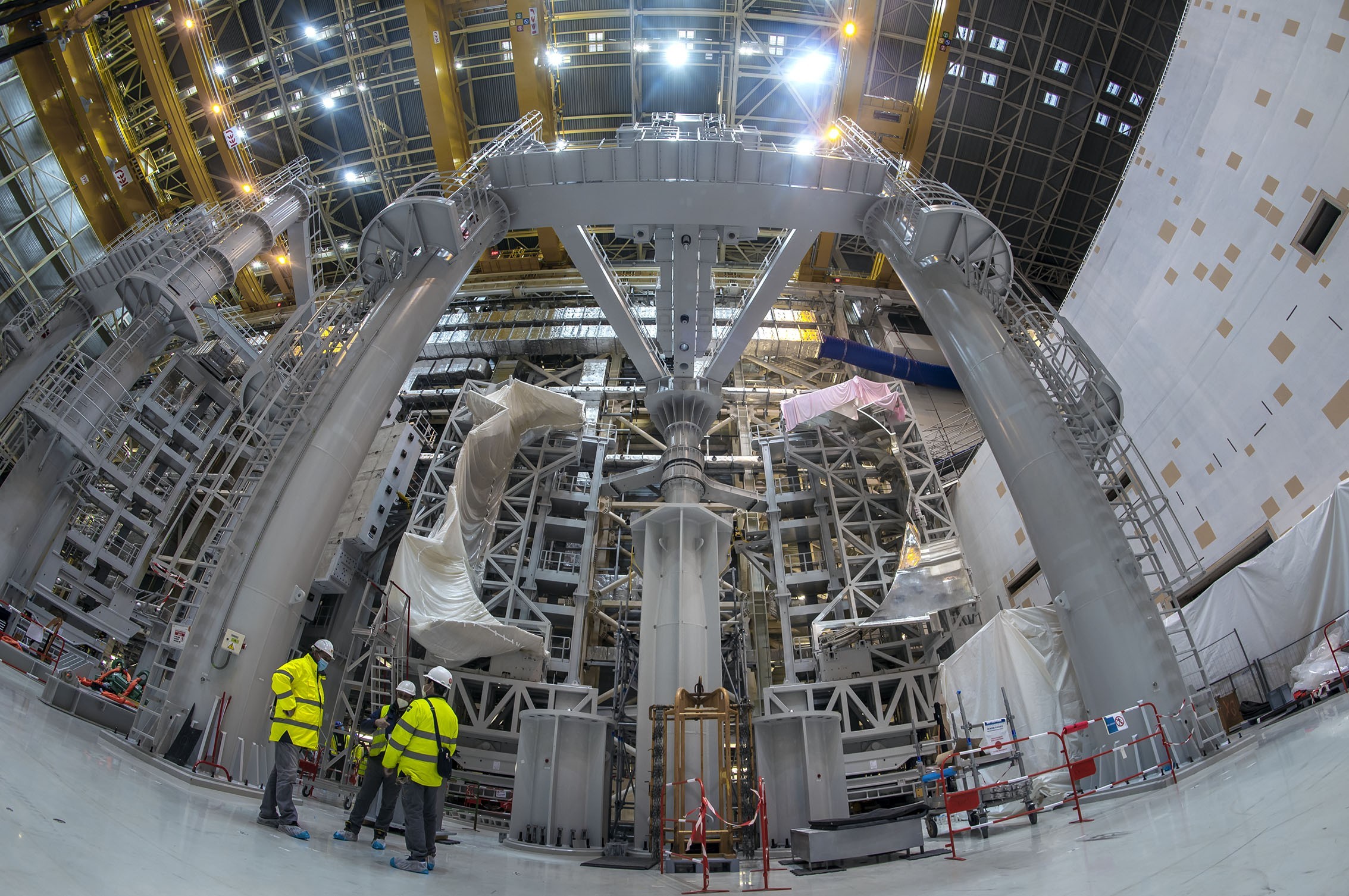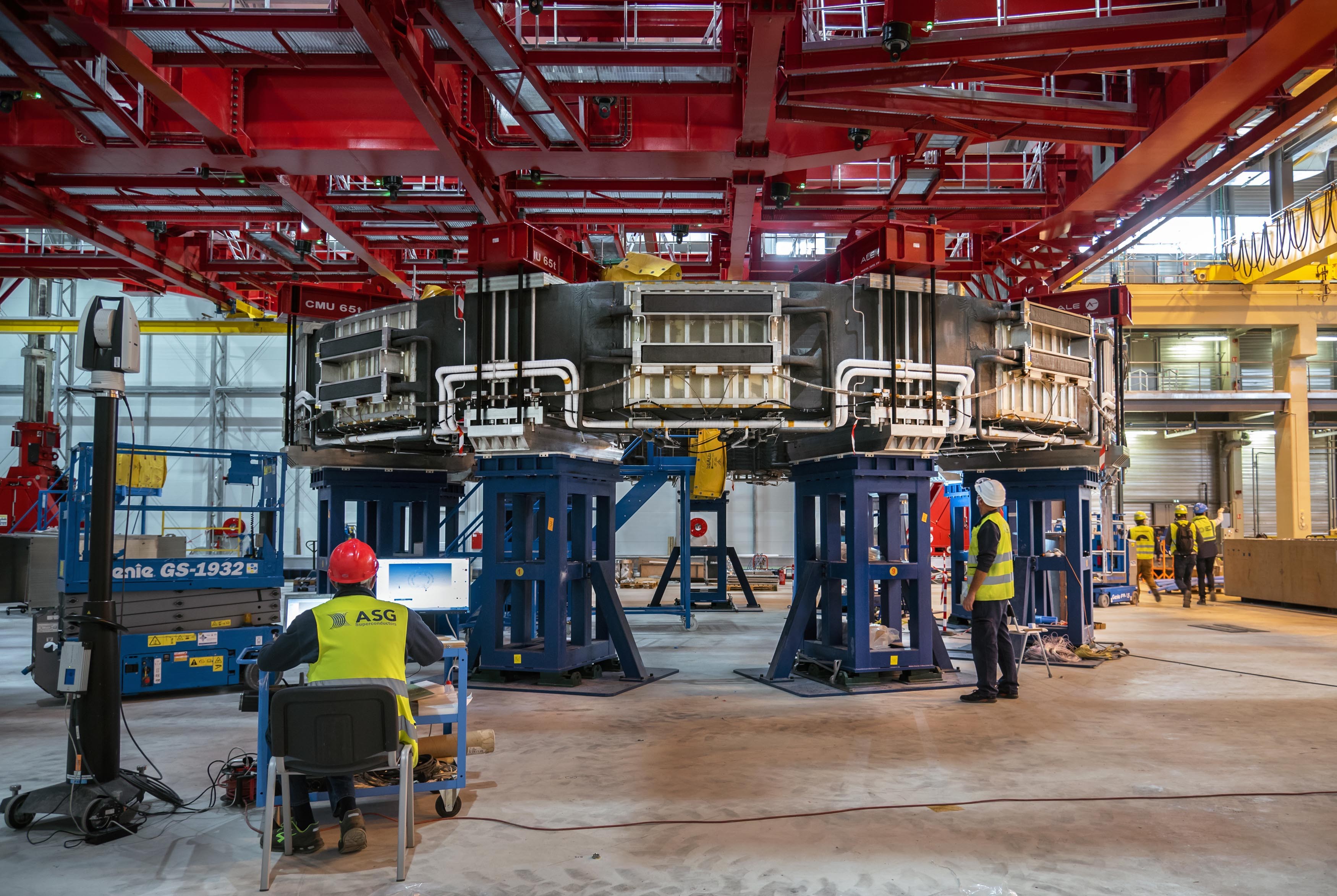
Thermonuclear Predictions
back to contentsIn its annual 10 Outrageous Predictions, Saxo Bank says that ‘revolutionary fusion design catapults humanity into energy abundance.’
Peter Garnry, Head of Equity Strategy of Saxo Bank, is confident that humanity is not yet able to adopt new technologies because of electricity shortage. Writing about electric power, he said, “From wood to coal to fossil fuels, higher-density energy makes whole new industries possible, as well as higher productivity and more wealth for society. And when we look at tantalizing future technologies, from hyperloop trains and AI, to hydrogen production by electrolysis and water desalination, cheaper and higher-density energy is the chief constraint. The world will need much more energy if our economy is to continue growing at anything approaching historical rates.”
In his opinion, new alternatives to renewables will not be able to dramatically reduce costs and increase the scale of energy generation. “Yes, they may be less harmful to the environment, but their system-wide effects from lower energy density mean they are really a big step backwards. The world urgently needs a disruption in energy technology.”
Thermonuclear fusion can be a solution to the problem. “Enter 2021, in which an advanced AI algorithm solves the super non-linear complexities of plasma physics, clearing the way for commercial fusion energy.” Energy density in thermonuclear fusion is truly the highest among the known sources of energy and amounts to 645 million MJ per kilogram. To compare, energy density of an internal combustion engine (less generator weight) is 8 to 10.5 MJ/kg.
Peter Garnry’s predictions are inspired by SPARC, an experimental thermonuclear reactor developed by the Massachusetts Technology Institute with support from the US Department of Energy.
The USA is not the only country doing research in thermonuclear fusion and its practical application — China, Russia and Europe are keeping pace.

Russia conducts research in thermonuclear fusion both independently and as part of the International Thermonuclear Experimental Reactor (ITER) project. At Rosatom, two organizations are engaged in thermonuclear research — the All-Russian Scientific Research Institute of Experimental Physics (VNIIEF) in Sarov studying inertial confinement fusion, and Kurchatov Institute specializing in magnetic confinement fusion.
Inertial fusion at VNIIEF
Conventionally, inertial thermonuclear fusion is achieved as follows: a spherical fuel target containing several layers of fuel and shells is compressed to a density that exceeds normal density by three orders of magnitude. The target is compressed using high-energy lasers or ion beams. Their energy evaporates the outer layer of the fuel target, producing a reaction force against the inner layer and compressing the target. The resulting shock wave should be strong enough to increase the fuel temperature to a level sufficient for a thermonuclear reaction to start.
In early December 2020, VNIIEF launched the first module of the world’s most powerful laser unit UFL‑2M needed to conduct experiments on inertial confinement fusion and study properties of material in extreme conditions (at ultra-high pressure and temperature).
The first module has eight laser channels. In total, UFL‑2M will have 192 laser channels. It means that 192 laser beams will hit the target from different sides. Thermonuclear targets placed inside the unit will receive 1.5 times more impulse energy than at the US-based National Ignition Facility (NIF), which is for now the most powerful laser generator among those commissioned or under construction.

“VNIIEF keeps enhancing its computational capabilities to model the behavior of the fuel target during inertial confinement fusion, studies physical processes inside the target, and optimizes process parameters of thermonuclear ignition. In the years to come, we expect to obtain more experimental data on the laser unit we are building,” said Artyom Gnutov, Head of Research and Development at the VNIIEF Theoretical and Mathematical Physics Institute.
New knowledge will give more understanding of the stellar processes and allow for finding possibilities of creating new sources of energy. Experiments on the new laser unit will start in 2021. “VNIIEF has every chance to be the first in the world to achieve thermonuclear ignition in targets,” said Sergei Garanin, a member of the Russian Academy of Sciences, VNIIEF Deputy Director for Laser Physics, and a general designer of laser systems.
Magnetic confinement fusion at Kurchatov Institute
Magnetic confinement fusion, as the name implies, uses a magnetic field to keep high-temperature plasma inside the tokamak without touching its walls. The tokamak is a transliteration of the Russian acronym that stands for ‘toroidal chamber with magnetic coils’.
In December 2020, a team of researchers from Kurchatov Institute created a concept design of a hybrid unit that will use both thermonuclear fusion and nuclear fission. Thermonuclear fusion will be used as a source of neutrons to control nuclear fission in the core of a conventional nuclear reactor. “Feeding plasma with thermonuclear fuel (heavy hydrogen isotopes, deuterium and tritium), removal of fusion products (helium) and, what is more important, the possibility of repeated use of the fuel mixture in the refueling process will ensure continuous operation of the hybrid system and thermonuclear reactor,” Sergei Ananyev, a senior researcher at Kurchatov Institute, explained advantages of the hybrid unit.
Another advantage of the hybrid technology developed by Kurchatov Institute is that it can burn long-lived nuclear waste of nuclear power plants, such as minor actinides, and obtain new fuels for fission reactors.
The next step is to build a pilot facility with a thermal capacity of up to 500 MW.
ITER
Russia continues its participation in the ITER project. The goal is to build a tokamak-type thermonuclear reactor and demonstrate the possibility of using controlled fusion in commercial applications. The countries participating in the project are Russia, India, China, USA, South Korea, Japan, and the European Union countries.
According to the contract, Russia undertakes to supply 25 hi-tech equipment systems for the ITER. Two of them — Nb3Sn and NbTi superconductors — have been manufactured and supplied right on time. Russian-made superconductors were recognized to have the highest quality in the world.
In November 2020, Rosatom made the first shipment of switchgear for the power supply system of the ITER superconducting electromagnet coils. The first shipment consisted of ten switchgear devices and ten control racks. They are designed to protect AC-DC converters in emergencies.

The shipment also included fiber optic probes for measuring temperature of electrical contacts and monitoring the busbar condition. “Fiber optic probes ensure natural galvanic isolation and are resistant to electromagnetic interference and magnetic field fluctuations. They also make it possible to build systems with thousands of measurement points at long distances from each other — this is very important for the ITER whose busbars have a total length of over 5,000 meters,” explained Maxim Manzuk, Head of BI‑4 Unit at Sintez Science and Technology Center of Rosatom’s Efremov Research Institute.

And other international research projects
Researchers from Kurchatov Institute take part in the Borexino Collaboration. Recently, scientists have found evidence that helium in the Sun is synthesized from hydrogen not only in the process of proton-proton chain reactions, but also in the reaction involving carbon, nitrogen and oxygen (the CNO cycle). German-American physicist Hans Albrecht Bethe, who received a Nobel Prize for his discovery in 1967, developed the theory describing this reaction. The share of this reaction in the Sun is about 1 %.
“Future research will help us to understand stellar processes better and obtain more knowledge about the chemical composition of the Sun,” Mikhail Skorohvatov, Head of Neutrino Physics Division at Kurchatov Institute, stressed.
Thermonuclear prospects
Peter Garnry of Saxo Bank believes that thermonuclear fusion is a new and abundant source of very cheap electricity, “The mastery of fusion energy opens up the prospect of a world no longer held back by water or food scarcity, thanks to desalination and vertical farming. It’s a world with cheap transportation, fully unleashed robotics and automation tech, making the current young generation the last required to “work” by necessity. And hey, how about a bit of CO2 sequestration on the side, dialing back the climate change clock in the process? Best of all, fusion energy allows nearly every country to become food- and energy-independent, and sees the most rapid and largest upgrade in living standards ever witnessed.”
However, taking into account the position of Mr. Garnry, we might assume that his main goal is to redirect investments. “Even more importantly, a massive investment from public and private sectors would allow the implementation of the new fusion design within a few short years,” Peter Garnry said.
Even a brief overview of the works on thermonuclear fusion by Russian scientists shows that the current research tasks go far beyond power generation for businesses and households and reach closed-cycle power generation and research into the nature of stars. “Controlled thermonuclear fusion is a hard nut to crack in science. Research in thermonuclear fusion is conducted in many countries and serves as one of the symbols of technological development. It often stimulates progress in other areas, such as fundamental science, material studies, lasers, plasma technology, and others. Russia keeps abreast of the times, developing its own projects and continuing research,” Artyom Gnutov said.
The possibilities of thermonuclear generation for commercial purposes need yet to be studied — it is a task for international partnerships. No wonder that Russian researchers believe that a new world powered by commercial thermonuclear energy is neither a reality of 2021 nor of the years to come.

“On the one hand, the knowledge we have accumulated brings us closer to practical applications of thermonuclear fusion. On the other, we realize more clearly how difficult this task is. Scientists have many times failed to predict even when they will achieve a significant thermonuclear reaction in laboratory conditions — a difficult but much simpler task than building a thermonuclear reactor. This is the reason why commercial use of thermonuclear energy is not what will happen in the coming years. One should be very optimistic to believe that we will harness it in 20–30 years,” Artyom Gnutov said.
He agreed, however, that thermonuclear energy — when it becomes a reality — would bring dramatic changes to the power industry and economy, open up access to power intensive technologies and, generally, change our life for the better.
Photo: The first module of the world’s most powerful laser unit UFL-2M




